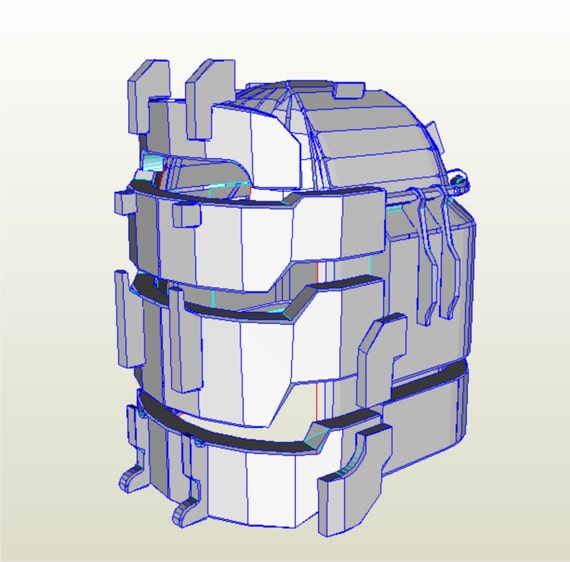Alien Head Pepakura Files Download
Bluetooth Drivers For Dell E5400. Some of you may have seen my back in October for the Halloween costume contest. The response was fantastic, not just here, but on many other wonderfully nerdy sites like Kotaku, MAKE, and Fashionably Geeky.
Free download alien head pepakura Files at Software Informer. Pepakura Viewer is a viewer that shows and prints 2D patterns in.PDO format. Apr 12, 2017 JFcustom's FOAM files. At the end we obtain some pepakura files with less and larger pieces. Alien head - provided by Movieman.

I was brand new to Instructables at the time and didn't realize how detailed users prefer their Ibles to be. In response to the many inquiries I had about the pattern I used and the pepakura aspect of the process, I've created this Ible to walk you through the paper craft end in greater detail. The Queen is a BIG project and requires a lot of hours, but hopefully the following will make it a little easier for those who dare construct her.
Consider this your crash course in large scale, advanced Pepakura, to use as a spring board for your own Alien prop and costume projects. Step 1: The Source File. I knew I wanted to make the Alien Queen for Comic Con/ Halloween, and some quick googling revealed that there were bountiful resources in fan driven prop recreation forums. The file I ended up choosing came from, and was created by a user named MovieMan. I have since sent him a thank you email for his lovely work, though it appears he hasn't logged in for months.
The original file is now offline, but I've re-uploaded it for you You'll need to download in order to read the file. The program is free to download, but it will not save any changes you make to the file unless you get the paid version. The program will allow you to view/ rotate the model in 3 dimensions (like in a 3D rendering program), and will also display the flattened print view (right), distributed over a number of pages. Step 2: You Will Need. In addition to the source file and the Pepakura Designer program, you will need BASIC PEPAKURA ASSEMBLY: 1 Ream of Cardstock --regular paper will not withstand the scoring and gluing this project requires. You need card stock for its body and structure.
Metal Ruler X-Acto Knives and Extra Blades -- Standard shape or swivel head Scissors Self-healing Cutting Mat Elmer's Glue Several Envelopes or Folders Access to a Printer -- Any black and white home printer will do, as long as it can feed card stock through. FOR OPTIONAL RESIN HARDENING: Chip Brushes --or other cheap industrial paint brushes. DO NOT use foam craft brushes as they will not hold up. Disposable Containers -- like rinsed out cottage cheese or yogurt tubs. You'll use these for your resin and they'll be thrown out after, so do not use anything you care about. Bondo Fiberglass Resin + Hardener Drops TBSP Measure -- This will also be used for your resin, and may never come totally clean. Buy a cheap plastic set of measuring spoons at the dollar store so you don't ruin one you use for other projects or food.
Step 3: Before You Print. The original pepakura file was created in Europe, and thus the printable pieces are configured to A4 paper. If you're working on A4 paper (first pic), you're good to go.
If you live in North America, you will need to change your paper settings and re-arrange some of the pieces in order to print successfully. Open your pepakura file. In the top menu, go to 'Settings' >'Print and Paper Settings' Change the paper size to regular Letter size. After doing this, you will see that the boundaries of you pages, shown on the right side of your screen, have changed.
The Alien pieces may be hanging off the edge and bleeding over onto other pages. Using your mouse, select offending pieces and move them back up onto their page. Selected pieces will highlight red and move where you guide them. Do this for all pages, and don't be afraid to zoom in and be sure you got everything. If you're interested in conserving cardstock, this is also an opportunity to put more pieces on each page. You can move smaller pieces to fill existing gaps on more populated pages. I did this and reduced my sheet count by at least a dozen pages.
Step 4: Number Setting. The little numbers on all your flat pieces are VERY important. These are your guides for what goes where.
The program default seems to put a lot of the number outside the pepakura pieces. If you were to print and cut the pieces as is, you'd have to transfer all the numbers onto your pieces by hand, or risk not having any idea how things fit together. Go to 'Settings' >'Other Settings' and locate the box for 'Place Edge ID Inside Face'. UNCHECK THE BOX I know that sounds like the opposite of what you want, but it works.
All your numbers will pop to the inside of your pepkura pieces. Now they will be intact after you cut and it'll be easy to figure out what links together. Step 5: The Printed Pattern. Ultimately you'll end up with a rather formidable stack of card stock. Pages sometimes curl when they come out of the printer (depending on the style of printer), but this will not effect your final product.